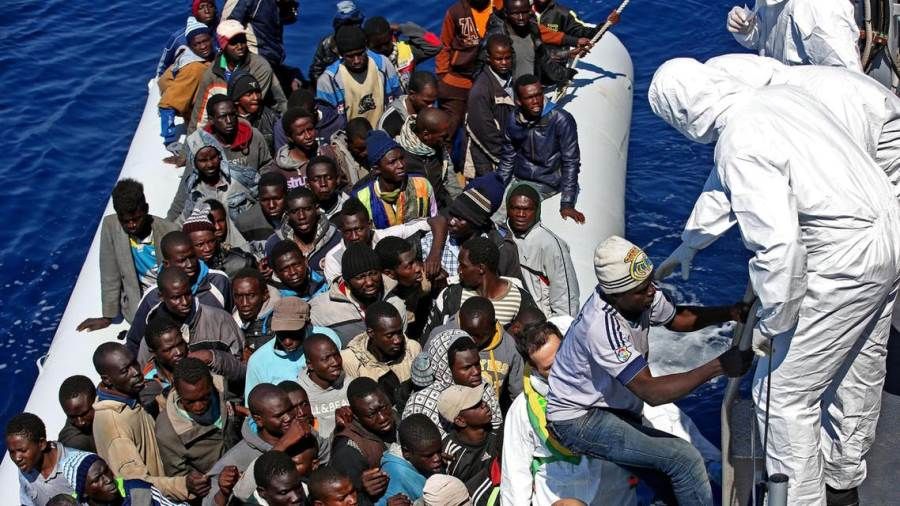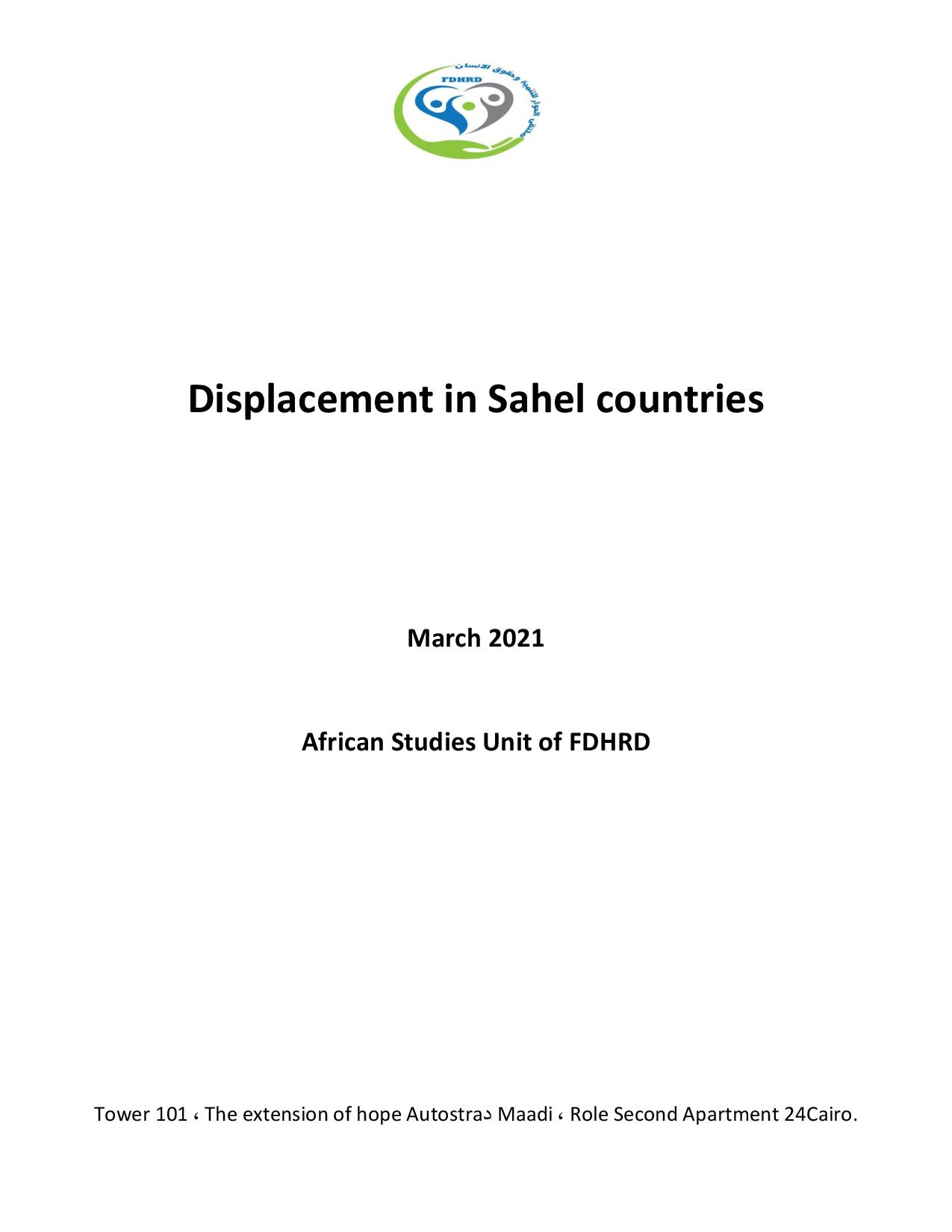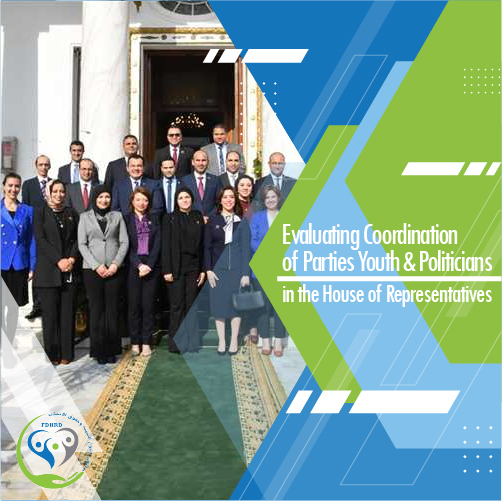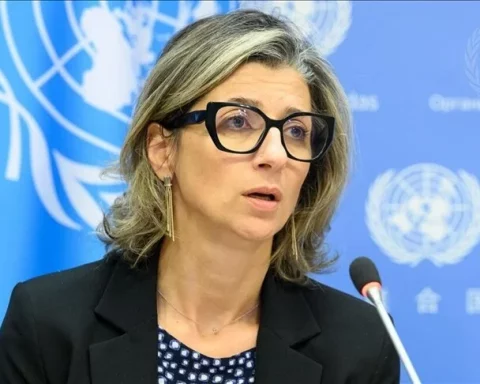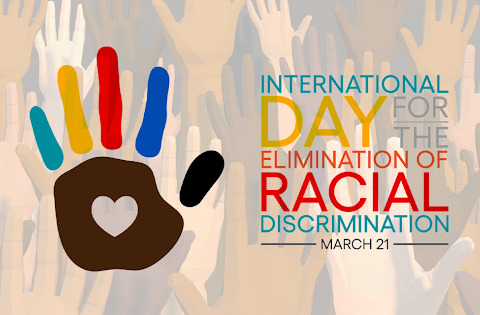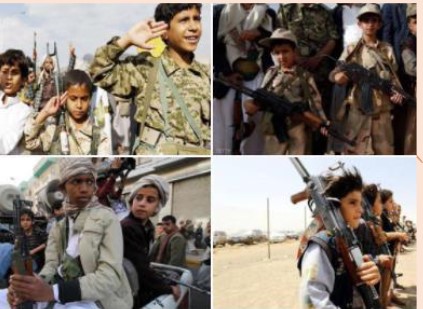Sunday 14th March 2021
Press Release
Displacement in the African Coast Countries
A report by the Forum for Development and Human Rights Dialogue
Today, Sunday 14th March 2021, the unit of African studies at the Forum for Development and Human Rights Dialogue a report entitled “Forced Displacement in the African Coast Countries”. The report reveals that the region of African Coast is considered an important international crossing road for illegal migrants in addition to be a safe shelter for them to gather. The number of migrants from Africa to Europe through the African Coast way has been estimated to be 55 thousand migrants in 2007 from whom traffickers gained 150 million dollars.
In addition, the report assures that the random bordering done by colonial countries has led to spread of wars and conflicts in the coast region because of weak national integration and identity crisis which are the biggest dilemmas faced by the national legislator in the coast region. The colonial countries have established the African Coast Countries within artificial administrative and political borders which led to widening the gap between societies, cultures and languages within the context of one strategy in the whole coast from Mauritania to Sudan.
The report also points out that because of those wars and internal conflicts and violations the recent years in the African Coast Countries have been characterized by great movements of refugees whether individual or group movements. Then the African Coast Countries have become the most important exporters of refugees as Africa is the second biggest exporter of refugees in the world with 26% whose number reached 6/5 millions. In addition, Sudan was the biggest exporter because of the civil war between the North and South and Darfur crisis. The report reveals that Africa has witnessed both forced and free migration movements reached unprecedented levels which contribute to the demographic scene and in many regions in the continent.
Moreover, the report sheds light on the most important basic reasons behind group migration and forced displacement in Africa among which are the deteriorated political, social and economic conditions, armed conflicts, lack of security, environmental deterioration and poverty, in addition to the globalization which facilitates people’s movement through different African areas to other areas outside the continent. The report also points out that the residents of bordering area in Mali, Burkina Faso and Niger are now in the focus of conflict, poverty and climate change and also these countries represent the focus of forced displacement crisis as more than one million and half were displaced and 365 thousand refugees who escaped from violence in the area of central coast, with more than 600 thousand people during the current year. As for migration in the African Coast Countries, the report reveals that most of environmental refugees are from the African coast and Al Sahara Desert region which includes about 17 African countries starting from Senegal in the west of Africa to north Eritrea in the east of Africa whose populations suffer from threats of climate change and political instability resulted from civil wars in addition to revolutions happening there.
The report adds that in regard to countries and communities which host refugees, Uganda is of the biggest hosting countries to refugees in Africa since its hosts more than million refugees from the region. Then come Ethiopia as the second biggest African country which hosts refugees since it hosts about 730 refugees from Eritrea, Somalia and South Sudan. Regarding the main destinations, the report says that 82% of refugees are hosted by developing countries. Yet still there are a lot of displaced refugees. Refugees often settle in the hosting communities which include some of the poorest classes or categories in their countries or in faraway or bordering areas where populations face difficulties in getting jobs and suitable public services. Besides, the report reveals that according to the statistics of UN High Commissioner for Refugees, there are eight destinations for refugees in Africa which are Uganda, Sudan, Ethiopia, Congo, Kenya, Chad, Cameroon and Tanzania.
Concerning forced displacement in the African Coast Countries, the recent displacement wave in the African Coast region which includes Burkina Faso, Chad, Mali and Niger has led to the increase of the total number of those who were forced to escape to more than two million people for the first time. During January 2020, about 7000 people have been displaced from the region of ‘Tillabery’ in the west of Niger as a result of terroristic attacks, according to the UN High Commissioner of Refugees. in addition, the report of the Internal Displacement Monitoring Center (IDMC) of 2020 points out that the rise of internal displaced people in Burkina Faso from 560.000 displaced people in 2019 to 838.548 displaced people in 2020.
In regard to the motives and reasons behind forced displacement in the African Coast Countries, the report mentions that the populations of the African Coast Countries leave their homes and villages for many reasons, the most important of which are terroristic attacks, armed conflicts, violence, local disputes over land and resources and climate change impacts of floods, drought and desertification. The report points out that the displaced people in the region of African Coast face many challenges among which are lack of security, spread of violence, human challenges for displacement, lack of food security, the inability to accommodate in the hosting communities especially within the weak infrastructure, in addition to the logistic challenges which face the organizations concerned with providing aids for the displaced people.
The report also sums up many results of forced displacement for the populations of the African Coast Countries among which joining terroristic groups, the existence of crises for the hosting countries, force children to leave schools because of lack of financial resources, many displaced people are exposed to killing and violence, kidnapping by different group for money and the International Peacekeeping Forces are exposed to death.
The report emphasized the importance of addressing and treating the crisis of displacement in the African Coast Countries to mitigate severe poverty and achieve stability. It is also important to prepare circumstances for humane and developmental effective bodies to help in finding solutions for displaced populations. This rapid and immediate aid should be associated with big investments for ways of livings and social services to enhance social cohesion and providing peace basis in the region.
The report shed light on number of responses for treating the crisis represented in: national response which adopted new systems for housing in addition to legislation amendments to legalize the displaced people conditions, regional responses which are the exerted efforts to overcome the challenges in regard to coordinating policies, monitoring and knowing the sites and needs of the displaced and the hosting communities and guaranteeing back of the displaced, in addition to international response through enhancement of international bodies and donors involvement in the issues of displacement such as UN High Commissioner for Refugees which announced its need to 185.7 million $ to provide protection and aid to rescue lives of refugees and internal displaced in the region of African Coast this includes 96.7 million $ for the initial needs of 2020 in addition to 29.3 million $ to implement the preventive measures regarding COVID-19 and how to deal with it in displacement regions and additional 59.7 million $ to increase response to emergency with focus on shelter, main relief materials and protection and response to sexual violence, education and environment. Regarding the efforts of human rights organizations (UNs and international organizations) to reduce the disaster of forced displacement, the report mentions what is done by these human rights organizations to reduce such crisis in addition to those efforts of the African Union and its organizations to face it.
The report has concluded some recommendations the most important of which are:
- Strengthening the efforts of the African Union and its organizations for better support for the problem in the African Coast Countries since the interest now is on the Middle East and North Africa.
- Providing humane camps and services for the displaced people in addition to providing funds necessary to provide education for them.
- Collecting the efforts of local and international organizations for monthly discussion for number of effected neighboring countries where there is forced displacement or displaced hosting.
- Providing international monitoring committee to monitor countries helping displaced people and their countries so that there will not be hidden supplies which could be a reason behind the crisis aggravation.
- Providing more members of peacekeeping in the region to protect those who expose to attacks daily.
- Forming civil groups to keep security between them and provide them with supplies and weapons by the monitoring committees as a kind of following up and enhancing their feeling of protection against assaulters in addition to strong immunizations for schools especially in Nigeria to reduce girls kidnapping.

